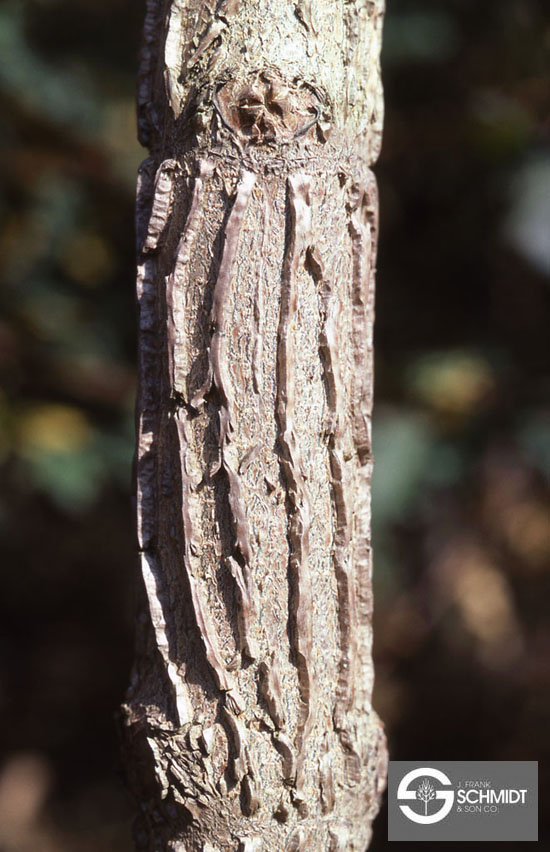| PSC 2620: Woody Trees and Shrub | Course Home | Week 6 |
Acer campestre - Hedge Maple
Plant Viewer
 |
 |
| Hedge Maple is a dense multi-stemmed or low-branching tree. If it is pruned up it will be an attractive small shade tree. | The leaf is 2-4 inches long and has 3-5 smooth lobes. |
 |
 |
| Young bark is very ridged, while more mature bark has less-pronounced ridges with an orangish undertone. | The samaras of Hedge Maple can have a red hue on their winds and are held in nearly a straight line. Image: Wikimedia |
Plant Description
Acer campestre is a small to medium sized (25 to 35 feet) deciduous tree traditionally used for hedge rows in Europe. It has a densely branched canopy with branches low to the ground, making it an ideal selection for screens and hedges. It will sucker from its root system to create a colony. If the lower branches are pruned up it makes an attractive, small tree suitable for modern small lots. It has a naturally pyramidal to rounded form. It is tolerant of poor soils, including highly acidic or alkaline soils, dry and compacted soils.
The dark green leaves are 2-4 inches long with 3-5 lobes. The petiole is long (2-4 inches), and when the petiole is broken off from the stem it weeps a milky white sap. The fall color is yellow and not spectacular. Small and inconspicuous yellow-green flower clusters appear in early spring. These are followed by 1 1/2 inch long samaras whose wings form a straight line or arch upward.
Landscape Use
As the common name suggests, Hedge Maple is an excellent selection for a screen or hedge due to its dense canopy and low branching habit. It is especially attractive in this role because of its hardy constitution. It is also an attractive lawn tree or small shade tree if it is trimmed up.